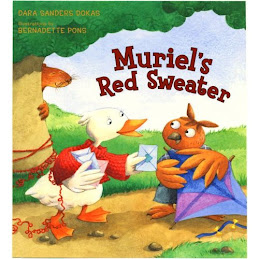
Most picture books have some similarities, especially in design format. Almost all picture books are 32 pages long. Why 32 pages? It has to do with the printing process, which is done on large sheets that are then folded to create the picture book.
This does not mean the actual story is 32 pages long, though. You have to leave a couple pages at the front and back (called Front Matter and Back Matter) for copyright info, title page, etc. So, that leaves about 28 pages for the story. This is important to keep in mind when writing your picture book text.
The 28 pages breaks down further into 14 full page spreads. A full page spread is the two pages together when the book is opened flat. Even if you are not the illustrator (which I'm not), you still need to think in terms of how the overall book will look.
To help yourself visualize your story, you can make a Dummy. A Dummy is a mock-up of a picture book with your text laid out over the 32 pages. (Remember to include copyright page, title page, etc.) You can add stick figures if you like. The Dummy is for your purposes only. It is to help you see how your story fits into a picture book format. (NOTE: Do not send your Dummy to an editor! If you are not an illustrator, they do not what to see anything related to art. They know how to find good illustrators and put the book together.)
Some questions to ask yourself:
Does your story fit well into 28 pages? Will some (or all) of the pages be full page spreads? Is their too much text on some pages? Where are the best places to have page turns? Is their a compelling reason to turn the page? Does the story have an arc - meaning does it build and build to some kind of conclusion? Is their room for the illustrator to add to the story?
Ultimately, the editor and book designer decide the layout of your story. But, as a writer, it's important to think about these things. It will help ensure that your story flows well and is a good fit for the picture book format.


Great tips, thanks.
ReplyDeleteYou're welcome!
ReplyDelete